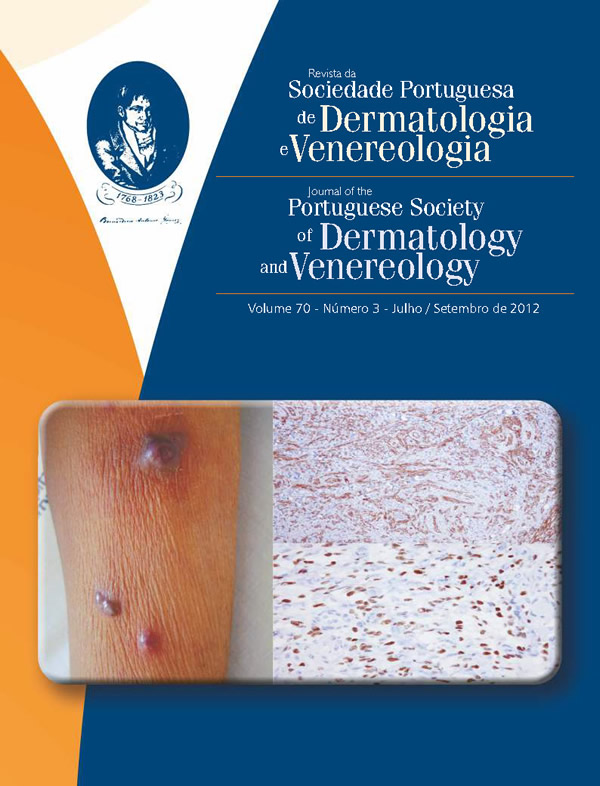ASHY DERMATOSIS - TRATAMENTO COM CLOFAZIMINA
Resumo
A Ashy dermatosis, ou erythema dyscromicum perstans, é uma dermatose rara de etiologia desconhecida. Os autores descrevem o caso de um homem de 46 anos saudável, com história de lesões cutâneas cinzentas assin- tomáticas no tronco com 1 ano de evolução. A constelação dos achados clínicos, histológicos e laboratoriais permitiu efectuar o diagnóstico de Ashy dermatosis. O doente iniciou tratamento com clofazimina oral, verificando-se resolu- ção completa do quadro clínico e mantendo-se sem lesões cutâneas ao fim de 6 meses de vigilância. Estão descritas inúmeras opções terapêuticas para a Ashy dermatosis, no entanto nenhuma eficaz de forma consistente. O tratamento com clofazimina tem sido defendido devido ao seu efeito cosmético e a uma possível acção anti-inflamatória e imu- nomoduladora. Este caso documenta a eficácia terapêutica da clofazimina num doente com Ashy dermatosis.
PALAVRAS-CHAVE – Alterações da pigmentação; Clofazimina; Eritema; Doenças da pele.
Downloads
Todos os artigos desta revista são de acesso aberto sob a licença internacional Creative Commons Attribution-NonCommercial 4.0 (CC BY-NC 4.0).








